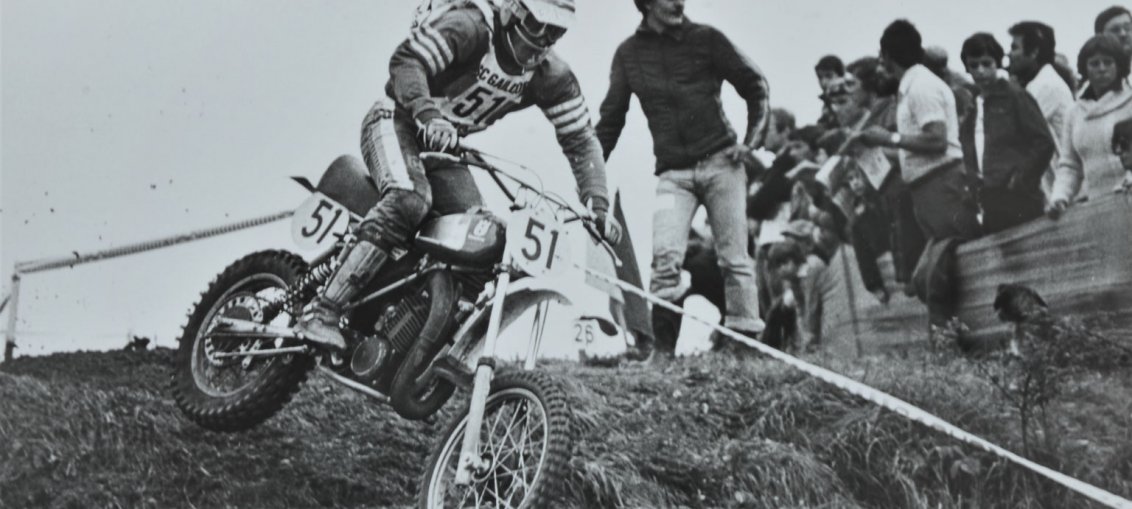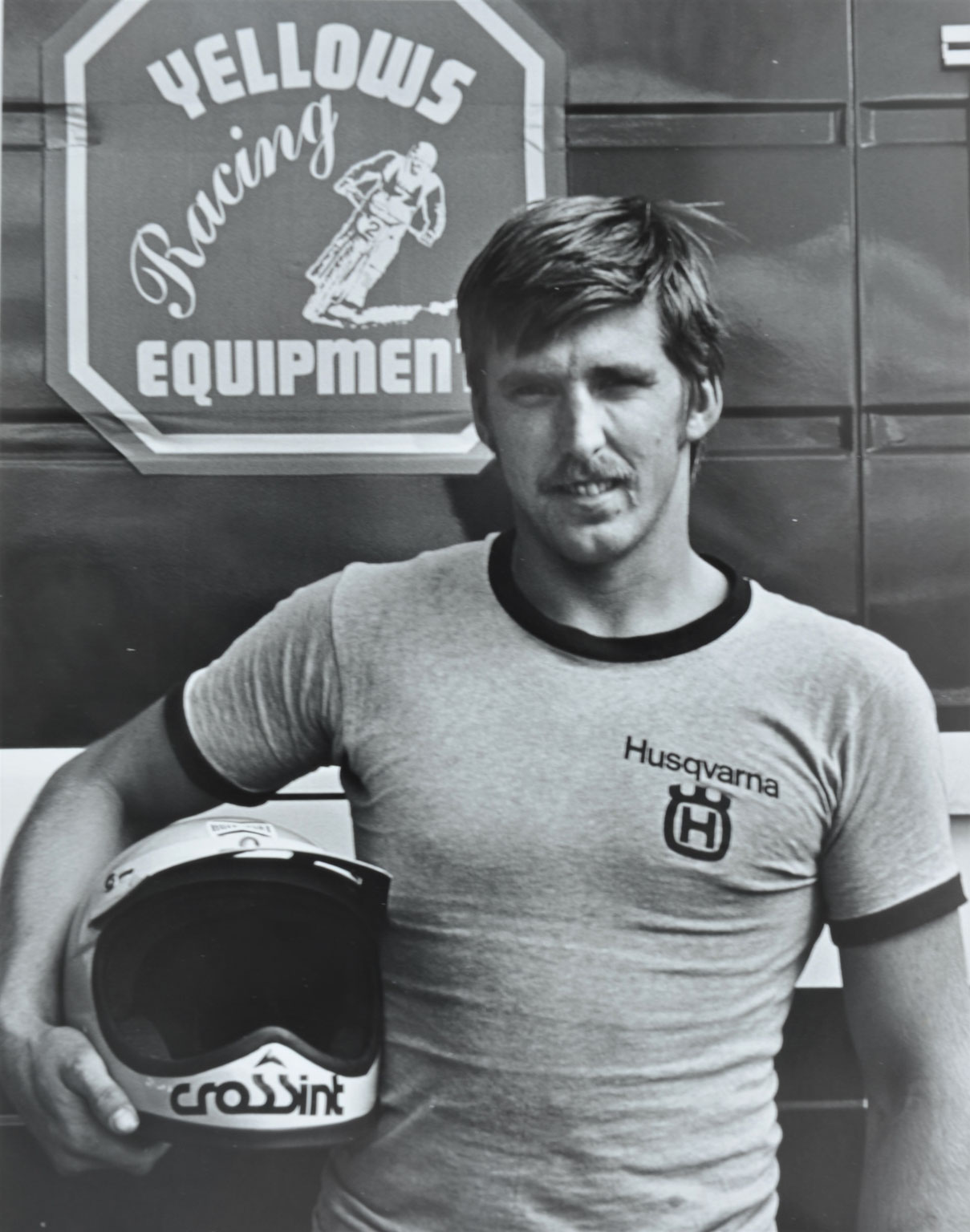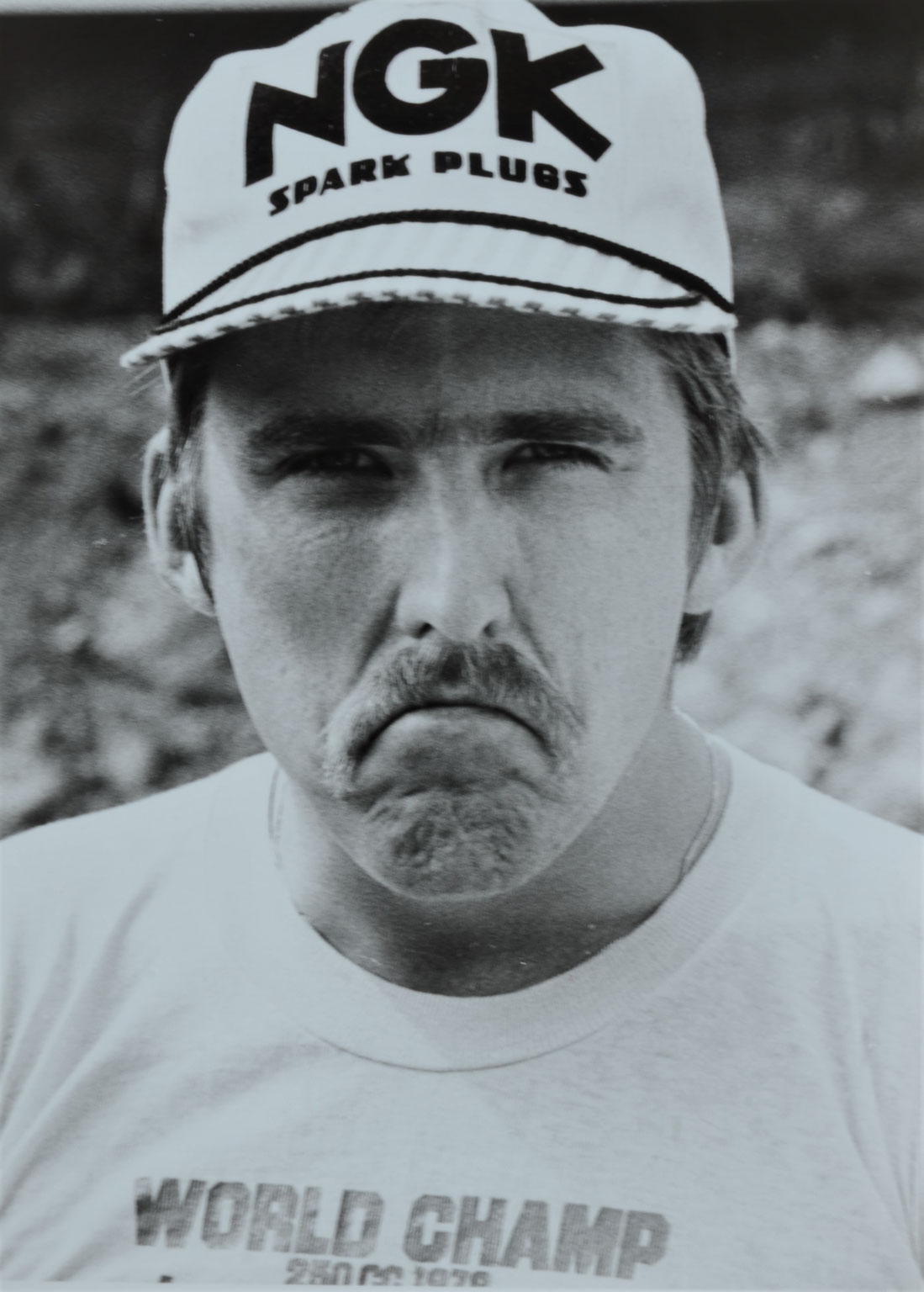
Hakan Carlqvist was born on January 15th, 1954. But the motocross racer we know started out with interests in many sports. At first he was a keen soccer player and an avid ice hockey man, as well as going downhill at high-speed. His interest in motorcycles came at the age of 16 when Carlqvist started to ride a 125cc road bike. The following year, in 1971, Hakan bought a Penton-KTM competition machine, which helped pave his way to future success. Carlqvist won his first race by being stubborn, fast and consistent. Step-by-step, he learnt to be a professional rider. His profession away from the track was as a glass-trader, having worked in the construction business before that.
Jumping ahead to 1978 and Husqvarna were only willing to give Carla a production machine and spare parts, having given him factory support the previous year. The season started well. Hakan won the first Grand Prix heat of his life at the series opener held in Spain. But the rest of ‘78 didn’t meet with his desire to conquer. He finished a mere seventh in the championship standings at the end of ’78. On home turf Carla was once again second in the national championship after Thorleif Hansen, another successful Husky rider who also made his name famous all over the world.
When the 1979 season approached, people from Husqvarna had doubts about Carlqvist’s performance. After some negotiations, the factory gave him a chance to prove himself on a factory machine in the 250cc world championship. There was no talk of contract money, but merely bonus for achieved results… “The money was of second importance to me after all my failures,” said Carlqvist, “all I wanted now was a chance to prove myself. Deep within, I knew I was a winner.”
1979 started well with a second place at the April opener, which as usual was held in Sabadell, Spain. Two weeks later, Hakan Carlqvist went on to race in Halle, Holland. In The Netherlands you race on sandy surface, most of the time. The loose ground suited Carla well and he won both motos in style, showing that he was on the right way to success. A week later the GP scene moved to Bra in northern Italy. Carla broke down in the first heat, but won the second. After three rounds, Carlqvist was ahead in the 250cc series and things looked promising.
“This season made all the difference to me,” said Hakan, “before I had to fix everything myself, but with my works mechanic Tommy Jansson, I was able to concentrate on riding, which proved to be successful. Tommy J was a man with a previous motocross career and he helped me both preparing my Husqvarna as well as offering psychological support. Our friendship goes back a long way, so this was an optimal solution for our team. I could also note that I was faster from the start this year and that my riding was more consistent than before.”
In Genk, Belgium, Carlqvist was beaten by his main rival Neil Hudson from Great Britain. However, Carla won the second heat so he still ruled the championship. In Karlovac, Yugoslavia, the order was repeated, while the Swede regained command in Holice, Czechoslovakia by winning both motos. Half the season was gone and Husqvarna was at the top of the standings. We were now in the beginning of June and it was time for the Polish GP in Szczecin. Again, Carlqvist won both races as he did the following week in Lavour, France. With four GPs to go, the championship was almost decided in favour of the 25-year old Swede. In the coming two Grand Prix rounds, Carlqvist only scored 10 points with a third spot at the U.S. town of Unadilla.
But in the first week of August the title chase was decided after Hakan Carlqvist won both motos in Bielstein, Germany. Out of the 24 held, Carla won 14 GP races and with his first world title in the bag, media now renamed him “Superswede”. There was enormous joy and it is hard to explain the emotions Carlqvist felt at the time of success. After his bad luck with severe injuries in previous years, he had many times been in doubt. But in the end his efforts paid off and Husqvarna had a new star in their factory team. The triumph of the Superswede received a fantastic media response after his great victory.
“My dreams finally came true,” said an exultant Hakan Carlqvist, “but my dreams went further since I also wanted the half-litre class title.”
The 1979 season had started on the 18th of February and went on until the 21st of October, with races every weekend but two. “At that time I was tired of racing around the globe and just wanted to relax with friends and celebrate my good fortune.”
With increased confidence, the stubborn Carla started preparations for another world title, which came in 1983. He was now well-known for his hot temper and his notorious outbursts. Hakan Carlqvist was a man who never shredded words, and the truth was not always appreciated in this non-forgiving game. His riding style set its mark by always trying to give the maximum and his attack would never be underestimated.
Shortly after his second title, I had lunch with Carla in Cologne. He was attending the IFMA motorcycle show. Privately, he was a simple and kind man, with even less words than normal. But some people compared him with the boxing legend Cassius Clay.
“But that is only because I am focused,” retaliated the bulky Swede, “it’s just my way of being. Having achieved my ultimate goal, I can relax and take the future as it comes. Maybe make some money, so I can retire without economic hassles.”
People who saw him concentrate ahead of a race, have another feeling about Carla’s behaviour. His hefty temper was both positive and negative for his riding skills. No matter what, Hakan Carlqvist will always be remembered as a hero. He spent his last decades in southern France, away from publicity. He suffered severely from pain after all the accidents during his career and lived with medicine and strong painkillers. “What’s done is done, he said, the rest of my life is private and not up for discussion.”
In 1983, Hakan Carlqvist received the “Svenska Dagbladet Gold Medal” which is the most prestigious sports award you can get in Sweden. He is one of the toughest men ever to sit on a bike. Moulded from hardened steel, he had a warrior’s instinct on the track. Passing away in the night of the 6th of July 2017, a Swedish motoring icon has passed.
Here’s mud in your eye, Carla!



